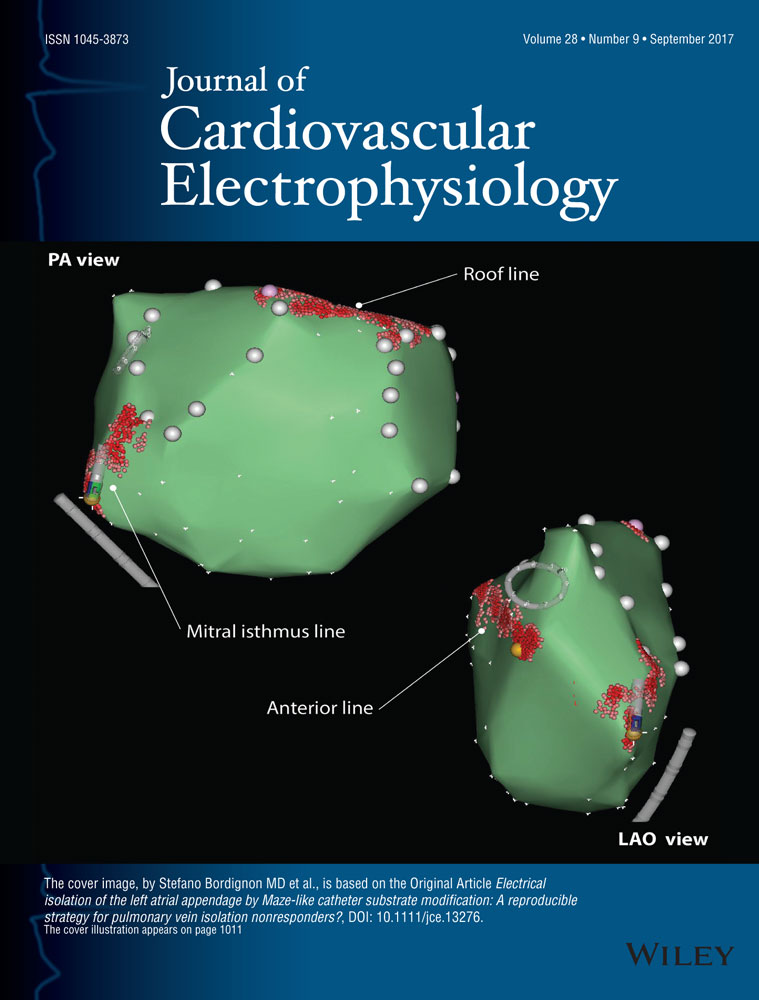Substrate characterization and catheter ablation in patients with scar-related ventricular tachycardia using ultra high-density 3-D mapping
B.N.S. reports an honorarium and S.W. reports consulting fees from Boston Scientific. C.M. also reports honoraria. Other authors: No disclosures.
Abstract
Background
Ablation of scar-related ventricular tachycardia (VT), especially in noninducible VT or hemodynamically unstable patients, can be challenging. Thus, we evaluated feasibility of an ultra high-density 3-D mapping approach to characterize the ventricular substrate and, if possible, to map VT.
Methods and results
Twenty-two patients (67 ± 2 years, mean LV-EF 36 ± 3%) with both ischemic and nonischemic cardiomyopathy and documented VT underwent mapping and catheter ablation using a 64-electrode mini-basket catheter. Substrate characterization included ultra high-density voltage maps, identification of areas of slow conduction and late potentials. Whenever VT was inducible activation mapping was performed.
In 13 of 22 patients, the presumed clinical VT (in 16 of 22 any VT) was inducible. A total of 50 maps were generated (22 substrate maps, 28 during VT), mapping time was 33 ± 4 minutes, number of points was 10,937 ± 1,923. Low voltage areas were related with the site of origin in all mapped VT. Isochronal maps indicated areas of slow conduction in 14 of 22 patients, all in border zone scar. In 95% of patients, late potentials were found. Mapping time during VT was 9 ± 2 minutes, number of points 6,740 ± 1,140. Covered cycle length was 82 ± 5% (16 re-entry, 10 focal, and two undetermined). During 4 months follow-up, 90% remained free from VT recurrence.
Conclusion
Ultra high-density mapping in patients with scar-related VT is feasible, safe and enables detailed insight into tachycardia mechanisms. Critical sites can be identified (1) by precise substrate characterization when VT is not inducible or hemodynamically not tolerated and (2) during short lasting episodes of VT in order to guide catheter ablation.




